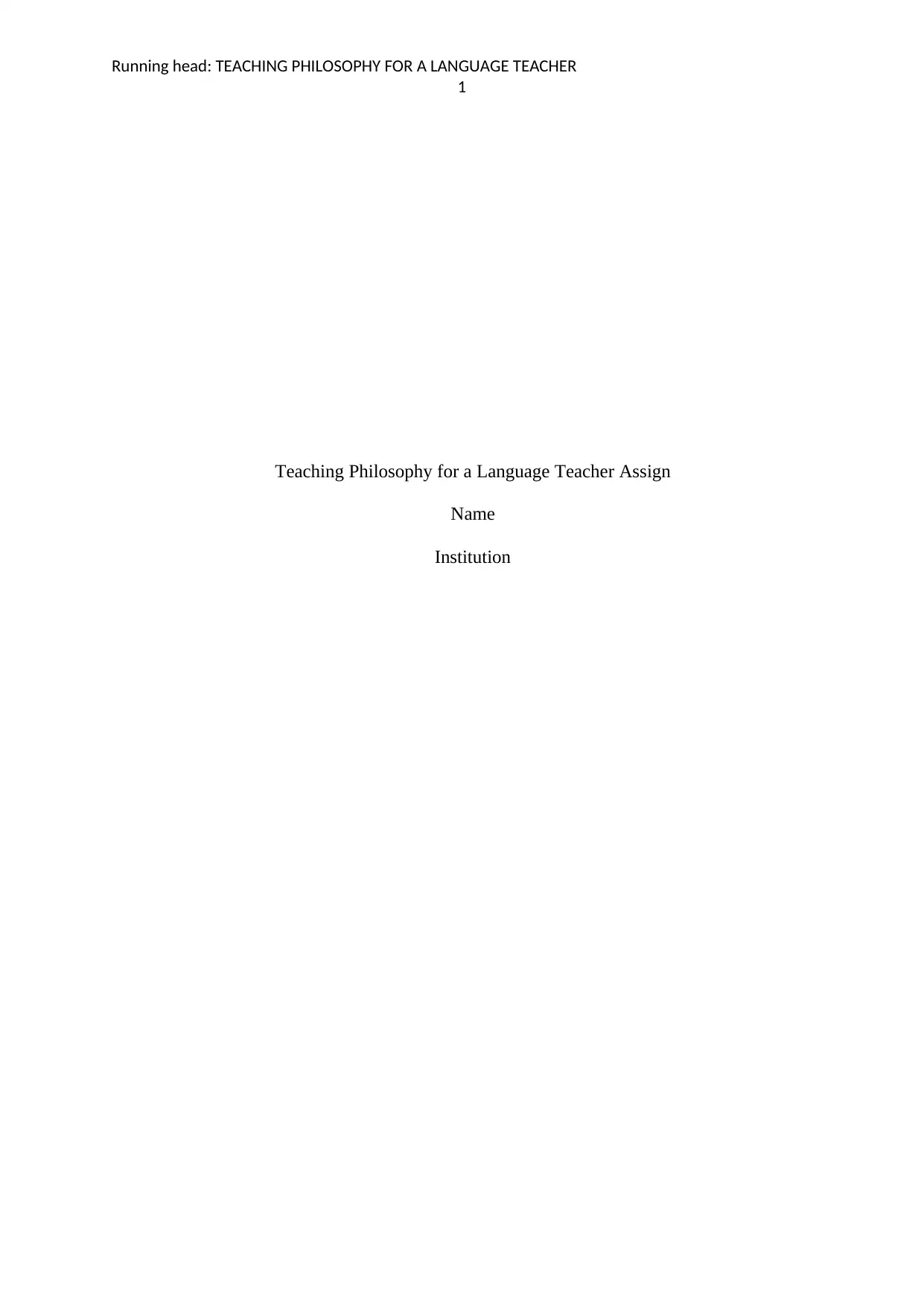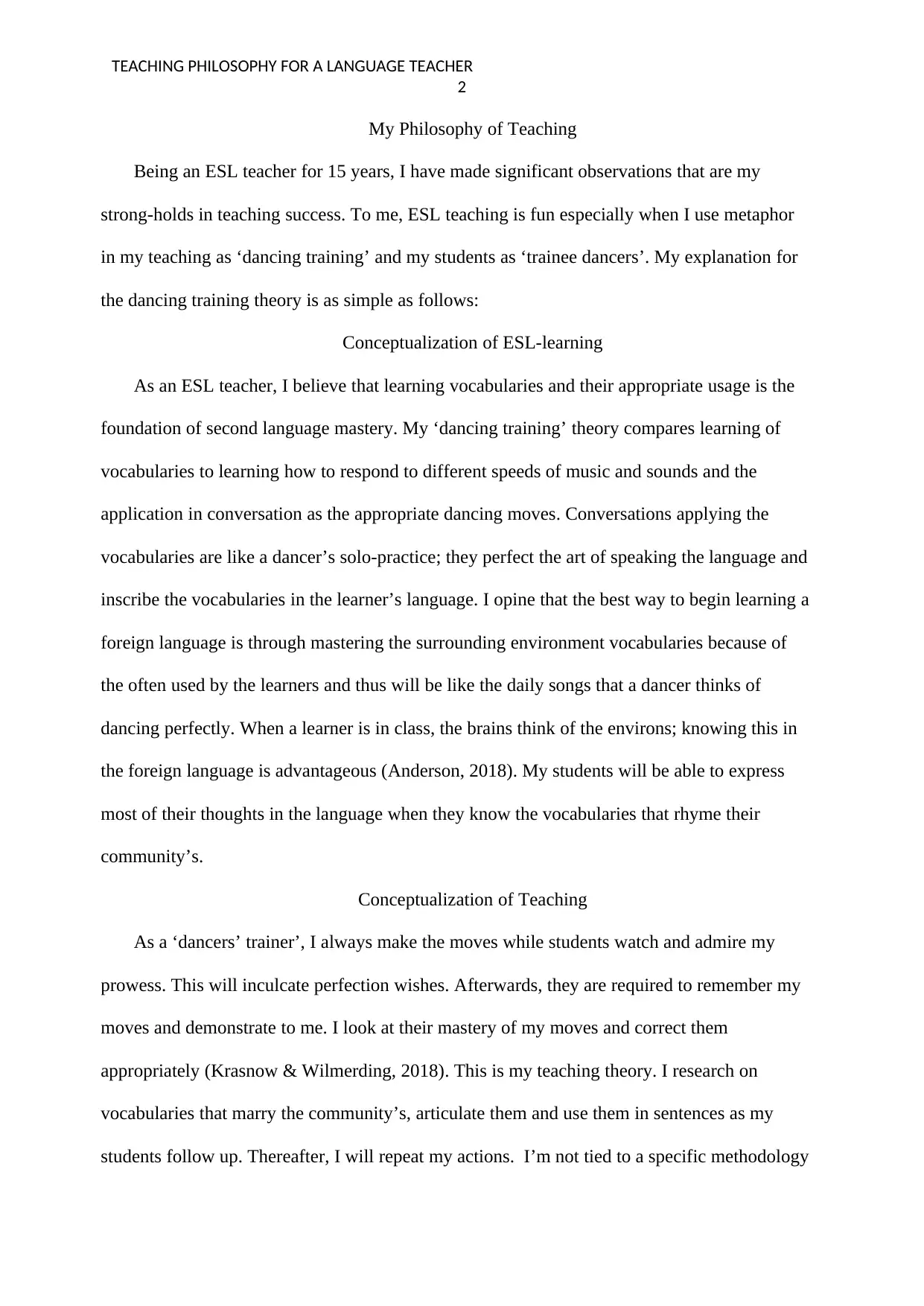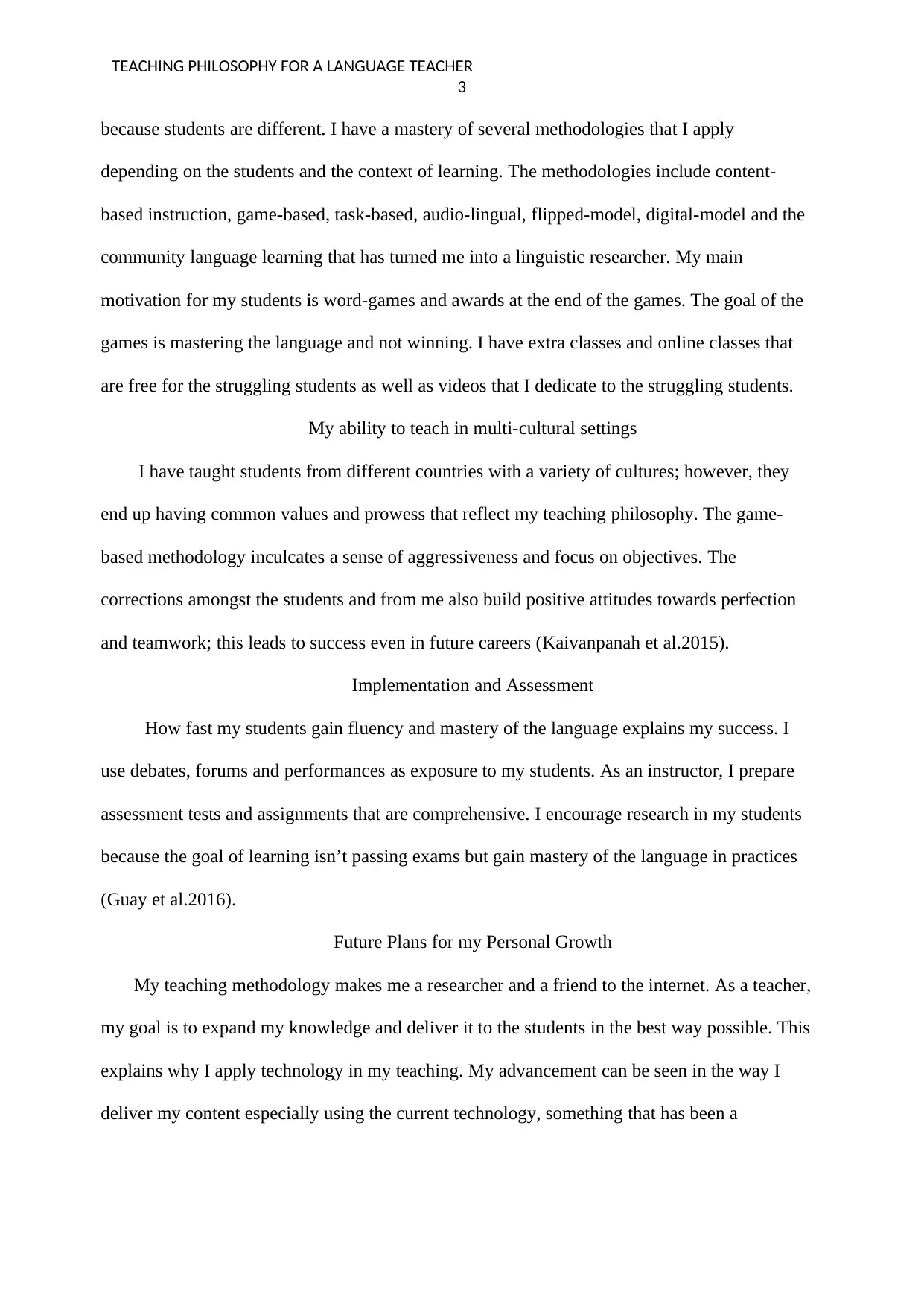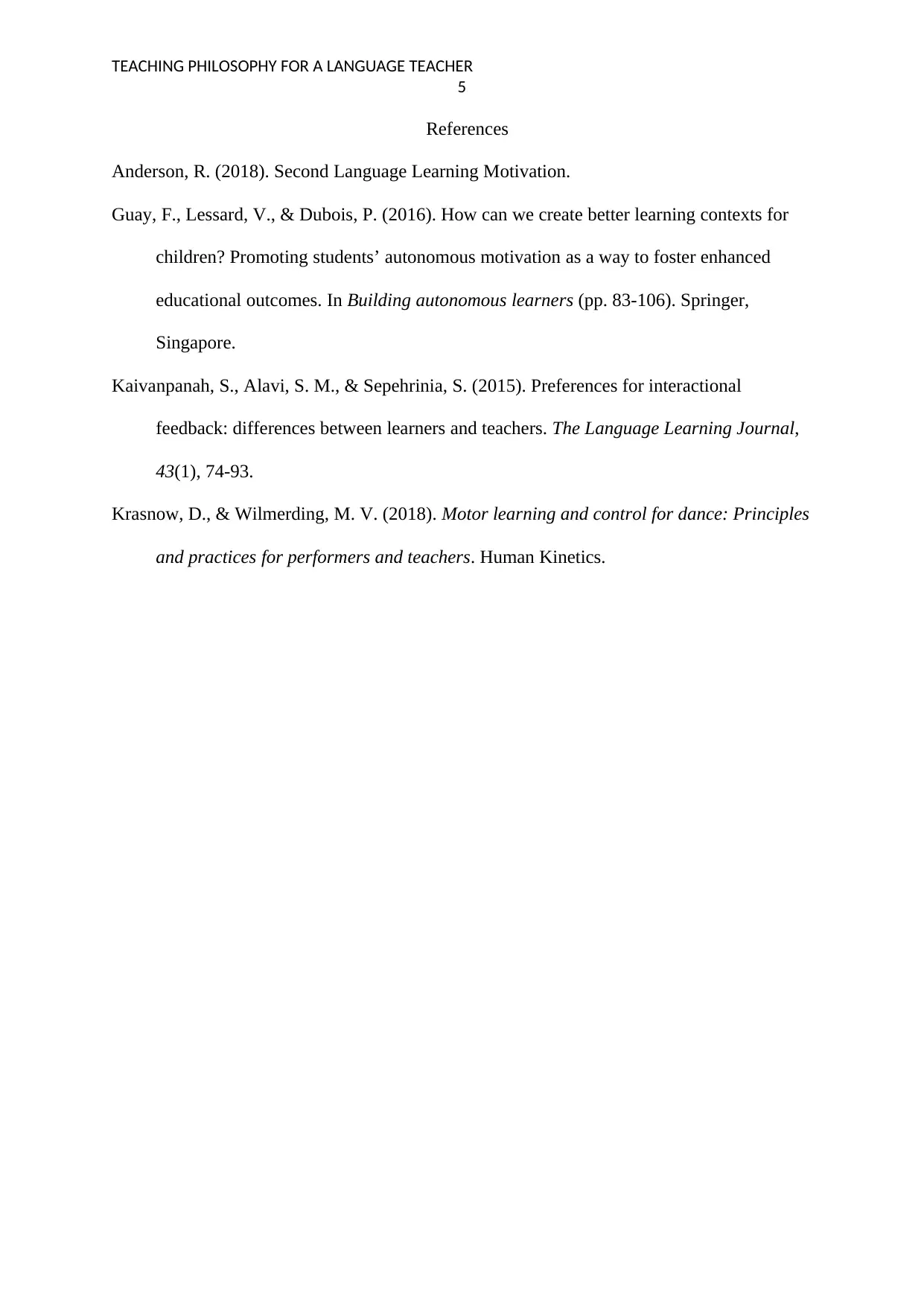ESL Teaching Philosophy: A 15-Year Experience Analysis
VerifiedAdded on 2022/11/16
|5
|891
|227
Essay
AI Summary
This assignment presents the teaching philosophy of an ESL teacher with 15 years of experience across multiple countries. The essay details the teacher's conceptualization of learning and teaching, emphasizing vocabulary acquisition and practical application through a 'dancing training' metaphor. It outlines various teaching methodologies, including content-based instruction and game-based learning, tailored to diverse student needs. The teacher highlights the importance of student motivation through games and awards, providing additional support through extra and online classes. The essay discusses the ability to teach in multicultural settings, fostering collaboration and inclusivity, and the use of debates, forums, and performances for assessment. Finally, it outlines future plans for personal growth, including expanding knowledge and incorporating technology to enhance teaching practices. References to relevant research are included.
1 out of 5









![[object Object]](/_next/static/media/star-bottom.7253800d.svg)